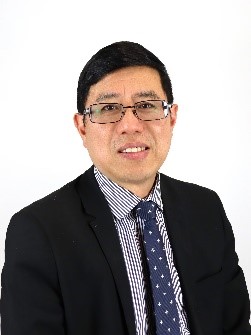题 目:Multiphysics modelling of fluid flow, mass transfer,
and reactive transport in deformed porous media
报告人:张立海 墨尔本大学
时间:2024年12月3日星期二上午10:00
地点:上海大学延长校区力学所200学术报告厅

专家简介
Lihai Zhang is a Professor of Infrastructure Protection & Management and the Leader of Engineering Management Discipline in the Department of Infrastructure Engineering at The University of Melbourne. He is best known for his expertise in numerically modelling of fluid flow, mass transfer and reactive transport in deformed porous media as well as engineering reliability analysis. Prof Zhang received his Master of Engineering degree from the National University of Singapore. Following a successful ten-year career in industry, he obtained his PhD from the University of Melbourne in 2009. His research work focuses primarily on reliability-based life-cycle assessment of built infrastructure. Notably, his expertise in interdisciplinary research gives him a leading advantage and a unique perspective in solving complex problems in Biomedical Engineering, particularly in Orthopaedic Biomechanics & Mechano-Biology. Prof Zhang is an Adjunct Professor in the School of Clinical Sciences at Monash Health, Monash University. Prof Zhang has published two books, 14 book chapters, two special issues as the Chief Guest Editor, and over 240 SCI journal articles. He has been awarded more than 30 national and international competitive grants and research contracts, with over 90% being industry related. He has been recognized as one of the Top 2% Scientists in the 2021-2024 Stanford/Elsevier rankings. He was awarded the International Computational Award, and the Outstanding Engineering Reliability Award at leading international conferences. Currently, Prof Zhang is an Editorial Board Member of Engineering Structures and the International Journal of Applied Mechanics. He is also a Fellow and Chartered Professional Engineer of Engineers Australia. Prof Zhang has successfully supervised around 30 PhD students to completion.
摘要信息
Many construction materials (e.g., concrete and composite) and biological issues (e.g., cartilage bone) are porous media in nature. In civil engineering, modelling porous media is critical for understanding material degradation processes such as corrosion, impact resistance and optimizing fire protection systems. In biomedical engineering, these models are applied to biological tissues, where the porous nature of cartilage and bone underpins their mechanical performance and healing dynamics. This presentation delves into advanced multiphysics modelling techniques for simulating fluid flow, mass transfer, and reactive transport within deformed porous media, offering insights across both disciplines. Recent advances in this research will be highlighted, demonstrating how our work can contribute to more resilient infrastructure and the development of bioinspired materials, ultimately supporting a sustainable future.
